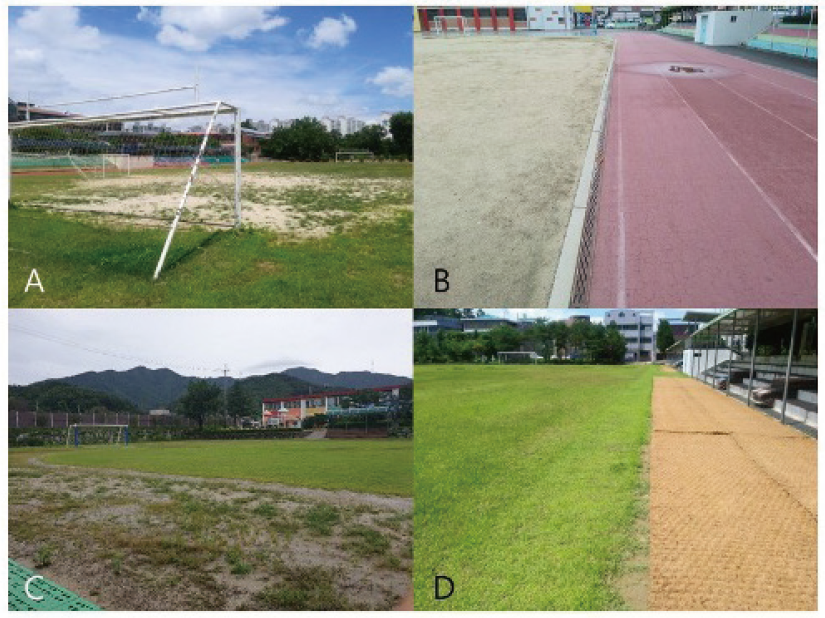Abstract
Knowing the playground types of elementary, middle, high, and special schools nationwide and alternative playground facilities can be of great help in understanding the learning environment of students. In this study, the playground numbers of elementary, middle, high, and special schools were surveyed from each provincial offices of education. In addition, we visited 102 schools nationwide to investigate the rate of track installation and the presence or absence of a gymnasium. The playground numbers in elementary, middle and high, and special schools nationwide were 11,730. Among the types of the playground, the order with the highest number was bare ground playground>artificial turf playground>natural turfgrass playground. The provinces where the proportion of natural turfgrass playground was over 20% were Jeju special self-governing province, Jeollabuk-do, Gangwon-do, and Jeollanam-do. Among the school types, the percentage of natural turfgrass playground in special schools was the highest at 44.7%. Among the playground types, the artificial turf playground had the highest track installation rate. The rate of track installation in the natural turf playground and bare ground playground was very low. Gymnasiums were owned by most schools regardless of school type.
Figures & Tables

Fig. 1. Various playground situations in schools. Turfgrass death area in front of goal post by human compaction (A), a playground that turns artificial turf into bare ground (B), weeds in removed track area (C), and installation of human-safe coverings in the removed track area (D).


